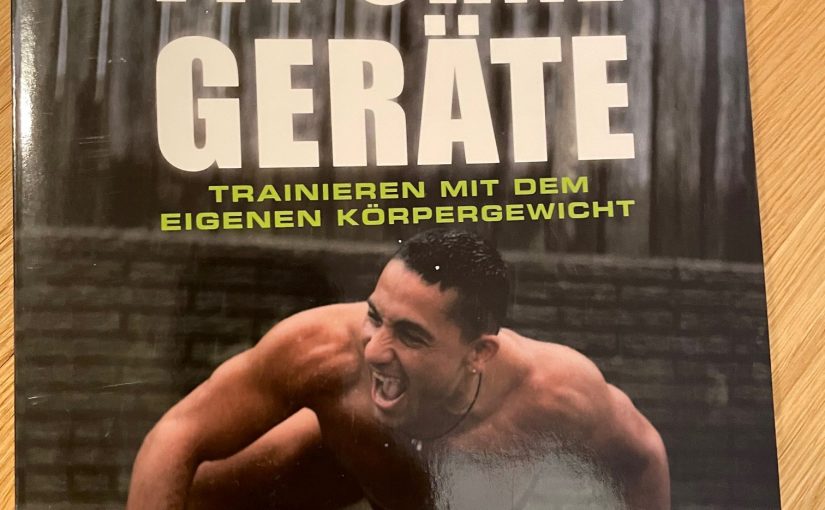After trying out a few studios(Kieser Training, Venice Beach, etc.), I stumbled upon the "bodyweight training" trend. Then, being someone who likes to read up on new topics, I picked up the book Fit Without Equipment by Mark Lauren. The biggest advantage I see with this form of training is that a) you don't have to travel (you can do it anywhere - at home, in a hotel, outside, etc.) and b) you don't need any equipment except maybe an exercise mat. The work itself seems to me to be a landmark in the bodyweight movement. The author was a former soldier and instructor, but that shouldn't scare you off. The exercises are possible for everyone - after all, you train with your own body.
And that is the big difference to training in the studio. A classic example is a push-up, in which the chest muscles, triceps, shoulders and torso are trained. In the studio I would do this with certain machines or dumbbells to train the muscle group chest or triceps specifically and mostly isolated. At the risk of injuring yourself due to too heavy weights - muscularly or even worse to joints, tendons, etc. When training with your own body, this is avoided if you proceed step by step and slowly increase the load. Because you can do that with your own body, too. For example, beginners start upright with push-ups "against the wall", move on to push-ups on the knees and then to the "normal" push-ups. You can then increase these by keeping your hands closer together, putting your legs on a bench, etc. I confess that I've never seen so many variations of the good old push-ups (which we used to have to do as kids and teens in between swimming practice as a disciplinary measure) before. And so it goes on in the book for all sorts of muscle groups. The functional approach avoids one-sided training, as several muscle groups are always strengthened.
The individual exercises are always described with pictures and an accompanying text on more than 100 pages - that makes up a little more than half of the book. In the new edition, according to reviews, they are also presented in a much more contemporary way and described even better than before. However, the exercises alone are only worth anything if they are combined in a meaningful way. Therefore, the exercises are followed by various programs lasting several weeks, which ensure progressive muscle building - if you bite through. They are divided into First Class (beginners), Master Class (advanced) and Chief Class (extremely advanced). A self-test is included for proper classification. For example, as a beginner you should be able to do 10 push-ups, as an advanced you should be able to do 8 one-arm push-ups per side (hand placed on a medium-high surface) and as an extremely advanced you should be able to do 8 "normal" one-arm push-ups. It quickly becomes clear that most people go into a program like this as a beginner - and that makes perfect sense. If you stick with it, you'll quickly notice how your strength increases and how you can move on to the more challenging exercises.
Finally, something about the beginning of the book. In the first 50 pages, Mark Lauren introduces himself, introduces the topic of bodyweight training, talks about fitness, nutrition, motivation, etc. I think it's worth it to at least skim through that. However, there are also sections that I ignored right after reading - especially on the topic of nutrition, I rather advise to consult works of a nutrition professional.
I find the section on motivation the most important, also because it talks about the excuses you can think of to skip a workout. Discipline over the long term is and remains the key to success in this and any other workout. If you find this too difficult alone, you should look for a training partner, this type of training is also great for a lockdown-compliant video call session.
I would buy the book again and it has given me valuable impulses for the way of training and permanent motivation. It was a turning point for me towards functional training, which I still do to this day in one form or another. You have to approach this, as always, with life in mind. Which exercises suit me? Which ones don't? There are definitely some that I simply couldn't do and had to replace with alternatives.
And here's my suggestion as a test to start here and now: how many push-ups can you do right off the bat? 1? 5? 10? I look forward to hearing your feedback. There is also an app to accompany the book, which I will report on separately.

One thought on "Working out with your own body weight"